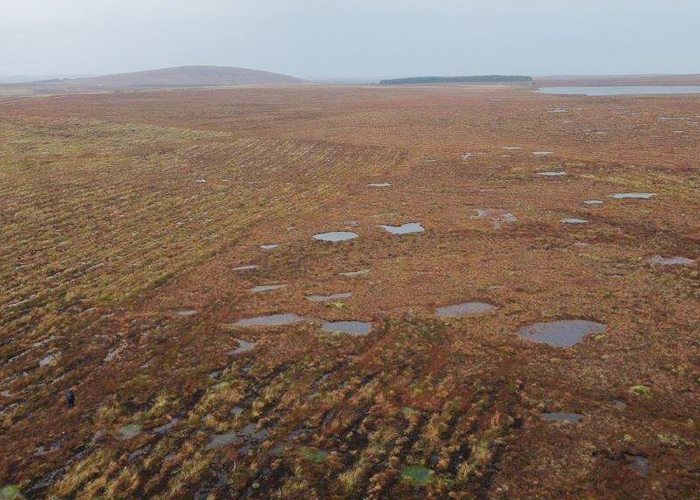A MAJOR review by UK scientists has led to an update in how greenhouse gas emissions from peatlands are estimated and a significant expansion of the Peatland Code, making more UK peatland restoration schemes eligible for private finance.
The evidence review, led by the UK Centre for Ecology & Hydrology (UKCEH) and supported by experts from The James Hutton Institute, was produced for the Department for Environment, Food and Rural Affairs (Defra).
It led to an update in how greenhouse gas emissions and removals from different types of peatland in the UK are estimated for use as part of the UK’s national Greenhouse Gas (GHG) Inventory, leading to an improved estimate of emissions from peatland in the UK.
The review also paved the way for the Peatland Code, a voluntary certification scheme for peatland restoration, operated by the International Union for the Conservation of Nature (IUCN) UK Peatland Programme, to be aligned with the GHG Inventory.
The changes will enable a better assessment of how much funding is needed for peatland restoration as part of the UK’s efforts to meet its 68% emissions reduction target, known as nationally determined contributions (NDCs), by 2030 (compared with 1990).
The alignment of the Defra-backed Peatland Code with the updated peatland inventory will also mean better estimates of the abatement potential that individual restoration projects can generate, providing greater confidence to project developers and potential investors.
Rebekka Artz, senior research scientist at The James Hutton Institute, says, “Every year, we understand more about peatland emissions and how to reduce them through restoration or better management. Through our increasing knowledge of peatland emissions, and by aligning the Peatland Code with our latest emission factors used in the UK GHG Inventory, we are better equipped to understand the scale of the issue, while more avenues are opened to green finance investment to deliver peatland restoration.”
The Peatland Code is the primary mechanism for private funding and generation of carbon credits for UK peatland restoration.
It provides a voluntary certification standard for UK peatland projects wishing to market the greenhouse gas reduction benefits of peatland restoration. It also provides assurances to voluntary carbon market buyers that the climate benefits being sold are real, quantifiable, additional and permanent.
Renée Kerkvliet-Hermans, Peatland Code Co-ordinator for the IUCN UK Peatland Programme said, “The Peatland Code has grown in recent years and now has 157 registered projects on bog peatland delivering 21,921 ha of peatland restoration and securing almost 5 million tonnes of CO2e predicted emissions reductions over the life of those projects.
“I am delighted that availability of fen peatland emissions data through this project has enabled us to expand the Peatland Code to allow a suite of additional lowland fen peat restoration to be enabled through private investment. I expect we will see a lot more restoration projects getting underway as a result of these changes.”
Peatlands occupy 12% of the UK’s land area and store vast quantities of carbon. Healthy peatlands capture carbon dioxide (CO₂) from the atmosphere and deposit a small amount of carbon as peat each year. However, around 80% of the UK’s peatlands have been significantly affected by the way they are managed.
The UK Government has committed to invest more than £50 million in peat restoration by 2025 and is currently consulting on banning the sale of peat and peat containing products. The Scottish Government has pledged more than £250 million in peatland restoration up to 2030, predominantly via NatureScot’s Peatland ACTION, and there are also peatland-specific initiatives in Wales and Northern Ireland.
However, the IUCN UK Peatland Programme/ Kerkvliet-Hermans points out that a significant barrier to peatland restoration is still financial. It says current public funding is both limited and competitive, while a £560 million gap in the funding needed to restore the UK’s degraded peatlands has been estimated, which makes attracting investment important.










